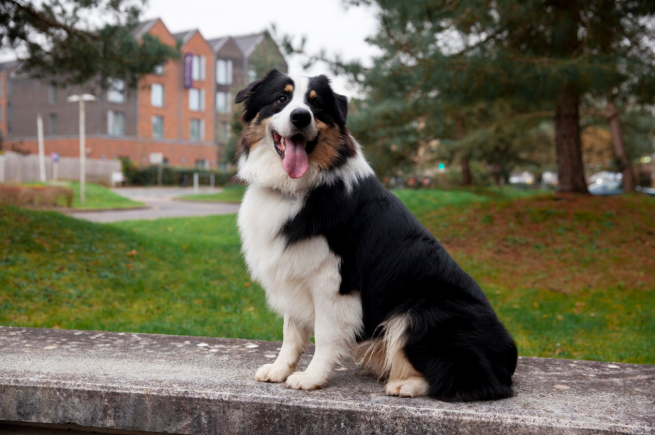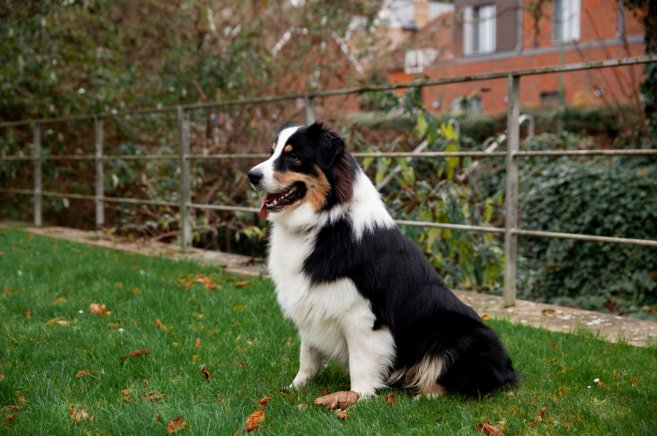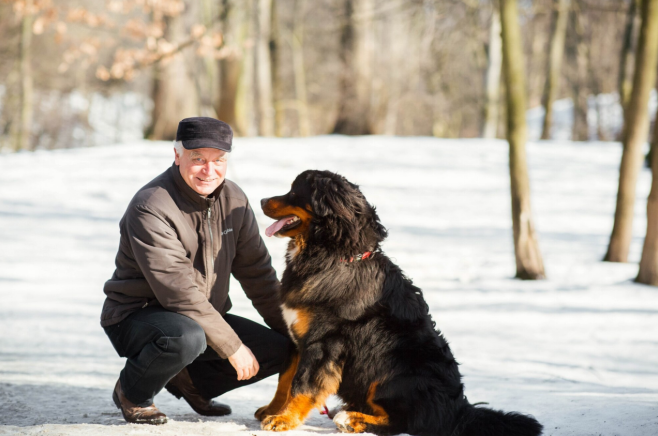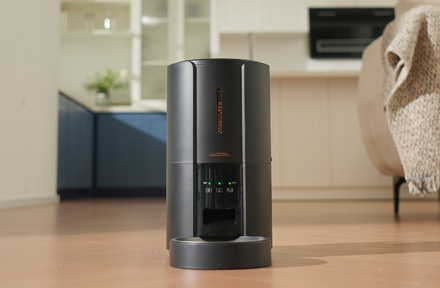May 14, 2025
Author:Sam Wonder

Have you ever wondered why Bernese Mountain Dogs seem both majestic and fragile? With their striking tricolor coats and gentle nature, these gentle giants win hearts wherever they go. But behind their loyal eyes lies a pack of Bernese mountain dog health issues that every owner should know about. These dogs live just 7–10 years on average, so understanding common problems early can make those years healthier and happier.
The following article provides essential information for both experienced Berner owners and shelter adopters who want to provide their dogs with optimal lives.
Understanding the factors that lead to these problems requires a brief examination. The Bernese Mountain Dog purebred inherits its genes from a restricted genetic pool that exists in its lineage. When purebred Berners experience environmental stressors such as poor diet or insufficient exercise the risk of developing problems increases.
The following sections will explore the major health risks hip dysplasia, elbow dysplasia and gastric dilatation-volvulus (GDV) and cancer. This article will examine both eye conditions and clotting disorders along with the other major health risks.
Now that you know how genetics and lifestyle play roles, let’s zoom in on specific conditions. We’ll start with joint problems, move to emergencies like bloat, then tackle cancers and other inherited disorders. Each section will explain what happens, how to spot it, and what you can do.
Hip dysplasia happens when the hip socket doesn’t form properly. Think of a loose lid on a jar—that’s how the femur moves in the socket. About 28% of Berners get it. You might see your dog limp, struggle to get up, or develop an odd gait. Vets use X-rays to confirm the diagnosis. Left untreated, painful arthritis sets in and mobility drops. If your pup is diagnosed, weight control and joint supplements help, and surgery can save their hips in severe cases. For tips on managing weight, check out our guide on how to keep your pets healthy.
Elbow dysplasia covers several defects—fragmented coronoid process or osteochondritis dissecans being the main ones. Puppies limp or their front legs seem weaker. A vet might order X-rays or CT scans to see the issue.
Over time, arthritis builds, causing chronic pain and lameness. Treatment includes anti-inflammatories, controlled exercise, or corrective surgery. To prevent over-exertion, read about how much exercise does a dog need every day.
Bloat is life-threatening. The stomach twists, trapping gas and blood. Dogs retch without vomiting, pace, and show a swollen belly. Bloat can strike in minutes, so call your vet ASAP. X-rays confirm the twist. Surgery is the only fix. For better health of your dog, you need to focus on his dietary habits. We recommend you buy WOpet’s automatic pet feeder.
To lower risk, feed smaller portions and keep your Berner calm after meals—learn more in our post on why does my dog eat so fast and throw up.
Cancer is the top killer in Berners. A 2005 BMDCA Health Study showed 67% die from it. Histiocytic sarcoma attacks white blood cells and can be localized, spread throughout, or hemophagocytic. Symptoms include tiredness, weight loss, or signs in specific organs. Other cancers like lymphoma or hemangiosarcoma also appear. Biopsies and imaging confirm the type. Sadly, prognosis is poor—dogs often live only 2–4 months after diagnosis. For ways to spot early signs, see common types of dog skin diseases with pictures, which also covers lumps to watch.
PRA is a hereditary eye disease. Early-onset appears at 3 months; late-onset shows up around 3–5 years. Night blindness and dilated pupils are early clues. An eye specialist runs exams and genetic tests. There’s no cure, and blindness follows within a year.
You can help blind dogs navigate by adapting your home—try ideas from our article on how to help your dog lose weight (for guidance on environmental adjustments).
vWD is a clotting protein deficiency. Minor cuts bleed longer; surgeries can be risky. Vets use DNA tests or factor assays to diagnose. Management means extra care during any procedures. Ask your breeder for clear vWD status and consider pros and cons of paper training a puppy to keep wounds under control early.

Even rarer problems can strike. Let’s cover allergies, autoimmune diseases, degenerative myelopathy, and hypothyroidism next. Awareness helps you act fast when unusual symptoms pop up.
Allergies
Dogs get environmental, food, or contact allergies. They scratch, lick paws, or get ear infections. Vets use elimination diets or skin/blood tests to find culprits. Managing allergies means diet changes, medications, or immunotherapy shots. See our guide on advantages and disadvantages of an automatic dog feeder—some feeders help control food allergens.
Aseptic meningitis strikes young Berners (3–12 months). Fever, neck pain, or lethargy may appear. Diagnosis needs spinal fluid analysis. If untreated, it can be fatal. Steroids help, but close monitoring is vital. For fluid care tips, explore how to keep pet water fountain clean.
DM attacks the spinal cord, leading to hind limb paralysis. Dogs show wobbling, dragging back feet, then full paralysis. Genetic tests for SOD1 alleles can warn you, but no cure exists. Physical therapy and mobility carts offer support. Learn about best dog paw trimmers for excellent grooming—good paw care helps with mobility aids.
Thyroid hormone drops, causing weight gain, fatigue, and skin issues. Blood tests confirm low hormones. Daily synthetic hormone pills keep levels normal. Maintain a balanced diet—find recipes in homemade dog food recipe for thyroid-friendly meals.
Health problems affect more than bodies. They impact emotions, finances, and daily routines. Recognizing these ripple effects can guide better care.
You’ve seen the medical side; now consider real-world effects. From vet bills to heartbreak, these conditions reshape life for you and your dog.
● Physical impact: Pain from dysplasia or cancer limits walks and play. Stiff joints or blindness change routines.
● Emotional impact: Chronic illness stresses both Berner and owner. Watching a once-active dog struggle tugs at the heart.
● Financial impact: Hip surgeries can run \$1,700–\$4,500 each. Cancer treatments and emergency GDV surgery add up. Plan budgets wisely and consider pet insurance early—it can save thousands.
● Lifestyle adjustments: Mobility carts, special diets, and vision-friendly home layouts often become necessities. For gear ideas, check top 10 best wireless dog fences updated 2025—keeping dogs safe when mobility is reduced.
● Early detection matters: Regular screenings catch issues before crises. Genetic tests, X-rays, and blood work form your prevention toolkit.

You can’t control every gene, but you can take steps to minimize risks and manage conditions. Let’s explore breeding, diet, vet care, exercise, and insurance strategies.
Prevention beats cure. By starting early and staying vigilant, you give your Berner the best shot at a long, happy life. Here’s how to build that foundation.
Ethical breeders screen for dysplasia, PRA, vWD, and cancer markers. They use databases like CHIC and Berner-Garde for transparency. Avoid dogs from closely related parents to boost genetic diversity. When choosing a puppy, ask breeders about their health protocols.
Feed high-quality, AAFCO-approved food that controls growth in puppies. Smaller, frequent meals cut GDV risk—learn more in how often should dogs eat. Keep your adult Berner at an ideal weight to ease joint pressure. If allergies factor in, consider hypoallergenic diets.
Annual checkups are non-negotiable. Have hips and elbows X-rayed, and get eye exams from veterinary ophthalmologists. Genetic tests for known Bernese issues help with future planning. Stay on top of vaccinations and parasite prevention—see how to remove ticks from dog for a safe yard routine.
Aim for 30 minutes of low-impact activity daily—walking or drafting exercises suit joint-vulnerable dogs. Avoid sprints right after meals to prevent GDV. Keep your Berner mentally sharp with training or dog sports, like agility or drafting. For fun ideas, read jobs for working dogs.
Enroll early to cover chronic or emergency treatments. Good plans include surgeries, chemotherapy, and physical therapy. Compare policies to find one that covers the conditions Berners face most often.
The primary health issues experienced by Bernese mountain dogs involve hip and elbow dysplasia along with GDV and histiocytic sarcoma and other cancers as well as PRA and vWD. Through responsible breeding combined with smart diet and exercise and regular vet checks and proper insurance your Bernese Mountain Dog can achieve a longer and healthier life.
Research breeders thoroughly then ask difficult questions while remaining actively involved in screening procedures. Your Bernese Mountain Dog will overcome health challenges when you provide love and knowledge and start treatment early in life to enjoy many happy years with your family.
Label:
Popular Post

What to Feed a Sick Dog With No Appetite? [2025 Guide]
May 16, 2023

Troubleshooting Common Issues with Automatic Pet Feeders: Tips & Tricks for Pet Owners
Oct 26, 2023

Why Does My Cat Cough After Drinking Water? 8 Potential Reasons
Mar 13, 2023

My Cat Only Eats A Little at A Time - What to Do?
Feb 27, 2023

Why is My Cat Throwing up Water? Top 5 Causes Here
Feb 08, 2023
$99.99
$129.99
Copyright © 2025 WOPET. All Rights Reserved.